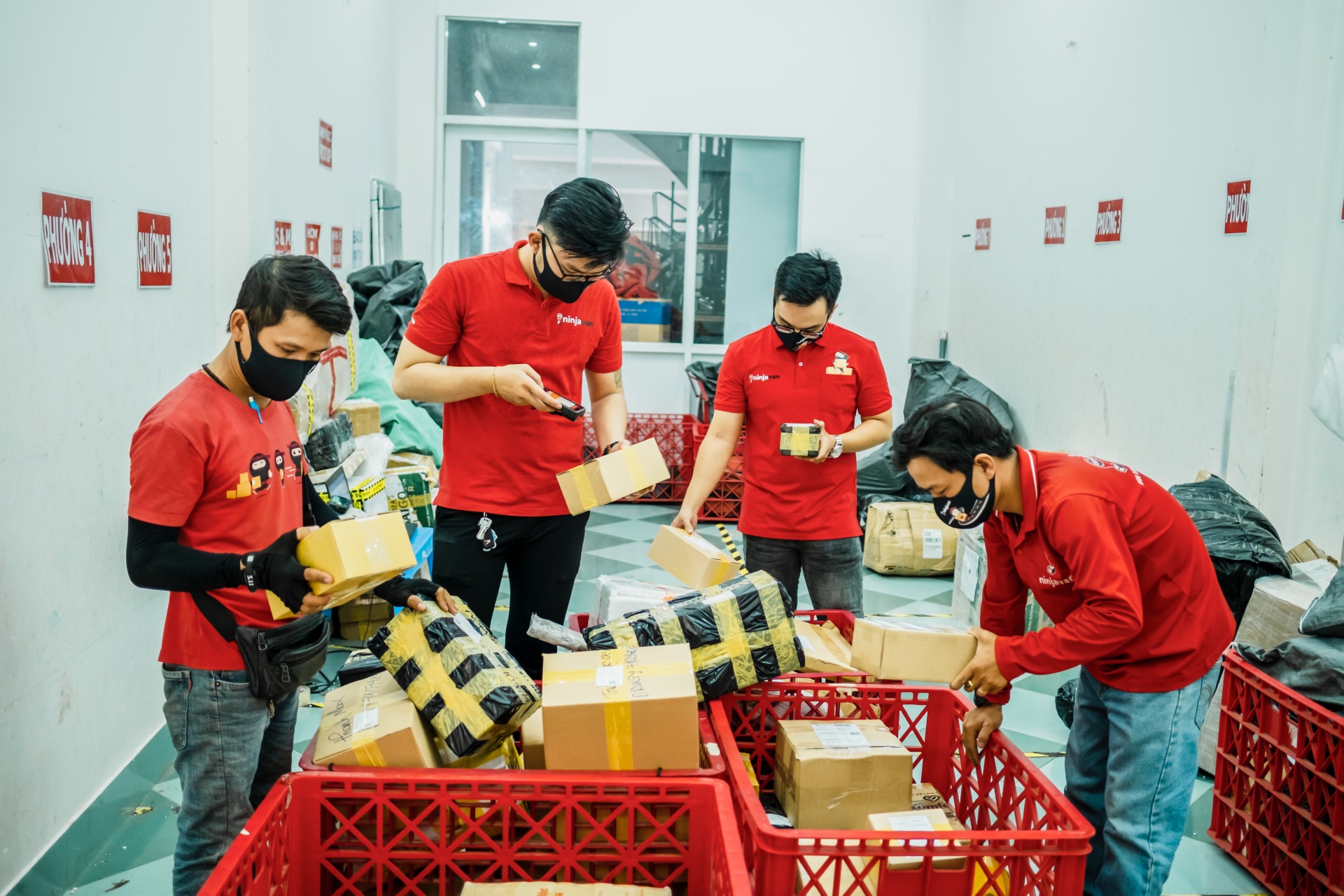How can e-commerce and e-logistics in Vietnam escalate in 2022?
 |
| The escalation of e-commerce and e-logistics |
According to the latest report by Ninja Van, Vietnam’s growth in e-commerce and e-logistics is among the fastest and most dynamic globally. The 10-year progress up to last year can be seen in two major phases – 2012-2017 and 2017-2021 – each with different motives.
The report points out that in the first phase, although domestic e-commerce platforms had been in the market for a long time, they were still modest until global giants entered the game. Gross Merchandise Value (GMV) rose from $700 million in 2012 to $1.5 billion in 2017. Meanwhile, the e-commerce share of retail sales increased from 0.8 per cent to 1.2 per cent over the period, an annual average growth rate of 16 per cent.
However, the true boom of Vietnam’s e-commerce was during phase two. GMV increased from $1.5 billion to an estimated $14 billion in 2021. E-commerce retail sales climbed from 1.2 per cent to 7 per cent and the annual average growth rate skyrocketed to 56 per cent.
In the first phase, the market was growing well, but there was untapped potential due to the limited number of goods, lack of trust from buyers, and insufficient logistics. Sellers were mostly domestic e-commerce platforms like Vatgia.com, Deca.vn, and small independent shops on Facebook. The goods on offer were not diverse, and their quality was questionable. Due to the limited trust in the e-commerce market, almost all of the payments were cash-on-delivery (COD).
In terms of logistics, there were only two dominant players offering nationwide parcel delivery, namely Vietnam Post and Viettel Post. Newcomers like Giaohangtietkiem and Viettel Post could only reach around 20 or 30 of the 63 provinces in the nation and the total delivery time could be as long as five days for multi-provincial routes.
In phase two, the market thrived due to the effort from all stakeholders and the number of orders from cities continued to increase. In the suburbs, the number of buyers surged thanks to devices that make accessing e-commerce easier. Notably, by the end of 2021, non-COD payment methods that were completed before delivery rose to 10 per cent of total purchases. This remarkable change indicated the buyers’ growing trust in e-commerce.
With regards to sellers, international e-commerce platforms like Lazada and Shopee officially penetrated the market. Meanwhile, local platforms like Tiki and Sendo also acquired more capital to facilitate promotions and boost their growth. Social commerce also exhibited positive signs, shown through the diversity of goods and the development of tools that helped products to reach more customers in less time. Along with this, the number of capable logistics players increased from two to 10 and the total delivery time for multi-provincial routes was cut down to only three days.
 |
| There are still some barriers that hinder the growth of the e-commerce and logistics market |
Last year marked a new milestone for Vietnam’s e-commerce market, there were many opportunities, but also new obstacles that need to be resolved to maintain the growth.
The number of buyers from cities is almost at its saturation point, while the average budget for e-commerce per shopper is showing a decline. By 2021, about 70 per cent of e-commerce orders were delivered to inner-city locations and the number of buyers from the suburbs and rural areas did not grow as fast as expected. The high percentage of COD orders – above 90 per cent – also indicates that buyers’ trust in e-commerce can be improved.
Domestic sources do not currently satisfy the demand for product diversity and aesthetic standards. In addition, the prices are reasonable for urban shoppers but out of reach for most in the suburbs. Thus, the market depends greatly on imported goods.
If border lockdowns are put in place, then the e-logistics firms cannot clear the goods as scheduled, meaning shoppers can abort the purchase due to the long wait. These cancelled purchases need to then be returned to the foreign seller or put into storage, but more significantly, the shoppers lose trust and the likeliness of them making future purchases decreases.
While infrastructure and transportation planning in Vietnam is making progress, logistics transportation is not likely to be prioritised in the near future. This might explain why national shipping in Vietnam takes up to three days, while China takes only two.
To resolve the challenges mentioned, the e-commerce and e-logistics ecosystem needs to make progress in digital transformation and enter the new normal. Platforms have to better serve the suburbs and rural areas with network enhancement strategies and the introduction of new promotions to encourage purchases from these regions. Additionally, events should be organised to help residents to become more familiar with the available technology and applications.
The government’s policies to encourage cashless payments are showing promising results, which may contribute to the increasing usage of e-commerce. E-payment services also play a key role in expanding the market and are expected to grow significantly soon, making a cashless-payment society more achievable.
Sellers need to find providers from major exporting countries and more ways to import goods. Meanwhile, logistics players must continue to expand their storage systems to deal with undelivered orders and work to cut the total delivery time.
The report stated that Vietnam’s e-commerce has strong potential for growth but there are still issues that need to be resolved. With the privilege of being in a market with nearly 100 million residents, the industry needs to work closely together and take the government’s policies into account.
What the stars mean:
★ Poor ★ ★ Promising ★★★ Good ★★★★ Very good ★★★★★ Exceptional
Related Contents
Latest News
More News
- Takeda supports health resilience amid climate change challenges (December 18, 2025 | 12:39)
- Mondelez Kinh Do - a chapter of purpose-led leadership in Vietnam (December 18, 2025 | 09:44)
- VNPAY services receive the highest-level PCI DSS international security certificates for six consecutive years (December 17, 2025 | 23:47)
- PPL extends its reach into ASEAN (December 17, 2025 | 15:44)
- Over 600 BUV graduates meeting quality benchmarks across triple quality assurance levels (December 17, 2025 | 13:00)
- HEINEKEN Vietnam partners with Ho Chi Minh City Traffic Police on road safety drive (December 17, 2025 | 09:42)
- BUV and China’s CSCSE sign MoU to boost educational cooperation (December 17, 2025 | 08:00)
- PVT Logistics honoured with ‘Fast Enterprise Award’ at APEA 2025 (December 16, 2025 | 18:22)
- Empowering Sustainable Data Centers with Smart Infrastructure Solutions (December 16, 2025 | 13:59)
- Vietjet wins gold ESG transport sustainability award in Taiwan (China) (December 13, 2025 | 22:03)

 Tag:
Tag:






















 Mobile Version
Mobile Version